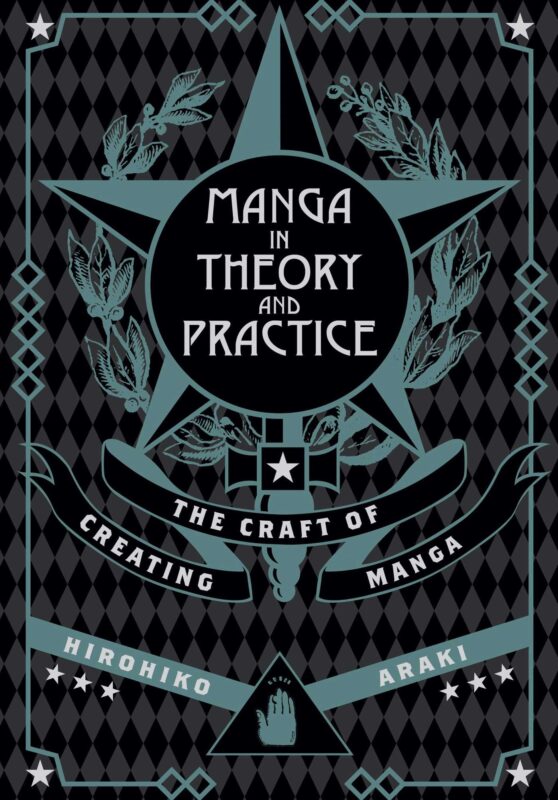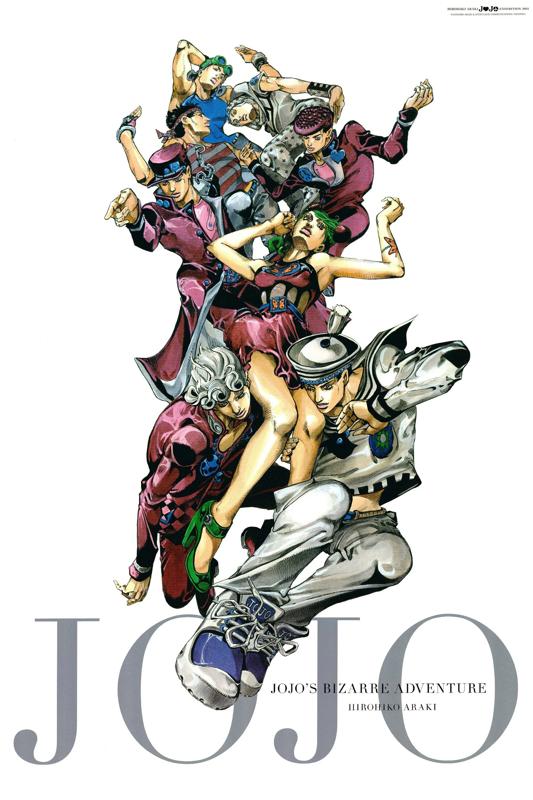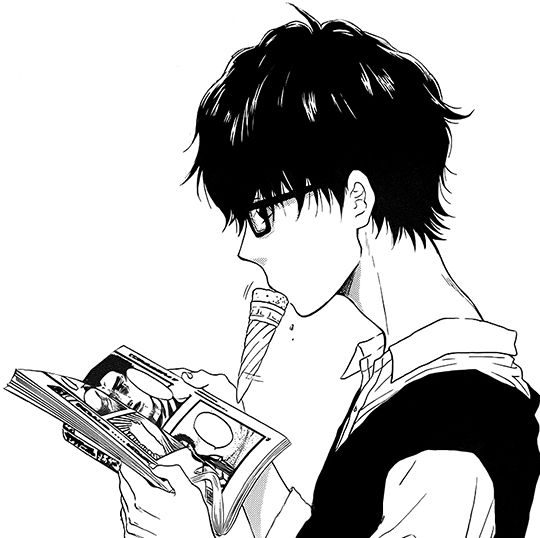
Manga in Theory and Practice seeks to provide a framework for manga writers. Hirohiko Araki is the author of JoJo’s Bizarre Adventure. Much of what he discusses applies to any type of story writing. He emphasizes the importance of the first page; it sets the tone of the entire story and is vital to selling the story to the reader. Throughout the book, he emphasizes the importance of doing something different rather than copying your favorite artists.
Araki breaks down everything into various lists, such as types of dialogue and the four fundamentals of manga structure: characters, story, setting, and themes. As he writes:
In other words, what your readers will see is the artwork, but behind those drawings exist the interconnected elements of characters, story, setting, and theme.
For Araki, the four elements need to be in balance; otherwise, the manga will be limited and unlikely to become a classic. Araki often writes about aiming toward longevity, toward becoming a classic. In order to understand how mangaka use these elements, he urges you to analyze a manga as you read it, just as you would analyze any work of literature to understand it.
Araki describes how to develop good characters, mainly through a strong motivation of some sort. Araki believes character development must always move forward, without any sort of major setbacks in their forward momentum. He claims downturns followed by upturns in growth become repetitive and not what manga readers want. The basic structure of story he uses is ki-sho-ten-ketsu where:
- ki – introduction, introduces the protagonist to the reader.
- sho – development, the protagonist encounters the antagonist and other challenges.
- ten – twist, the protagonist rises to the challenge, striking back at the antagonist.
- ketsu – resolution, a victory or some other happy ending.
The structure not only applies to the manga on the whole, but also to scene structure and series structure. Araki writes:
The ki-sho-ten-ketsu structure is a way of thinking that you need to internalize through your daily life in order for it to become less something you have to think about and more like a kind of muscle memory.
Araki explains this structure and the “always rising hero” necessity is why tournament stories are so common in manga. Interestingly, he goes into the weaknesses of tournament stories and offers advice on how to counter these weaknesses and the weaknesses of other structures like the journey story. Araki also suggests mangaka need to read Hemingway and other literature to see how dialogue and story can be handled.
When Araki moves to art, he makes several interesting observations:
Your foremost consideration as a mangaka is what kind of art you will draw. Art is the mangaka’s killer technique. The interesting part is that the art doesn’t necessarily have to be good. Just because a manga is drawn well doesn’t mean that manga will be a hit, and conversely some manga might make you think, “How is something drawn this poorly so popular?”
The trick to the art involves cohesive design, a sense of shape and space and strong signification–drawing an object in a way that makes it immediately recognizable. Think a drawing of a tree silhouette and how recognizable it is.. Manga, after all, teems with visual language shorthand like this–signification as Araki calls it. Araki emphasizes the need to practice everything. A mangaka needs to be able to draw everything from character to everyday objects and landscapes.
When it comes to setting, Araki explains the value of drawing on location whenever possible, just as drawing from life in general is a vital practice. Setting allows the reader to become immersed in the story’s world, and setting influences the behaviors and thoughts of the characters that live within it.
Theme connects characters, story, and setting together. Araki writes:
A theme is not something expressed directly, but is something akin to one who rules from the shadows.
Theme influences everything within a work. A theme has to be clear because it will influence how each frame is drawn and how the characters behave within the story. Different themes can shift a story in different ways.
Finally, Araki explains his process of making a manga, from notecards, sketchbook, script, panel layout, to the final page. Araki provides helpful examples and how to divide panels to achieve different effects and emotions for scenes.
Throughout the book, Araki provides concrete examples from his own works, including what doesn’t work and why. The book is a good resource for those who want to start making their own manga. Araki’s explanations are grounded in good story writing techniques. Although I have some doubts about his assessment that protagonists must always move forward without significant downturns. I find such downturns interesting–dark nights of the soul make heroes human. My preference might be why I lost interest in Jojo and stories where the heroes don’t experience a dark night of the soul. I often side with the villains in such stories; I find myself wanting to see the heroes humbled and defeated.
Manga in Theory and Practice offers a good starting point for those who want to get into making manga but don’t know where to start or how to study to improve. Ki-sho-ten-ketsu applies to many different story telling methods, and is, perhaps, the most important idea to learn from the book. Araki even explains how to learn to see ki-sho-ten-ketsu in everyday life.
If you are interested in learning how to tell stories, whether manga or not, Manga in Theory and Practice offers interesting perspectives, even if you may find some of the ideas going against your own preferences, such as my desire for dark nights of the soul. I would also recommend reading Save the Cat! by Blake Snyder and Save the Cat! Writes a Novel by Jessica Brody for other writing tips and structure. While Manga in Theory and Practice is helpful, at times, it is too vague about structural elements whereas Save the Cat! offers fine-grained breakdowns. And if you are a fan of Jojo, Araki’s book also offers insights to how he writes the series and comes up with ideas for it.





